|
Shat-Karmas
(The Six Purificatory Processes)
|
|
| Those
who are of a flabby and phlegmatic constitution only, should practise at first
these six Kriyas to prepare themselves for the practice of Pranayama and their
success comes in easily. These six Kriyas are: 1. Dhauti, 2. Basti, 3. Neti, 4.
Trataka, 5. Nauli and 6. Kapalabhati.
|
|
|
|
Dhauti
|
|
|
|
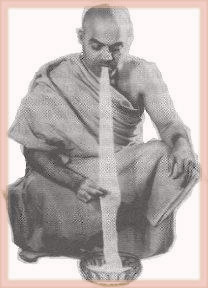
|
Take a clean piece
of muslin cloth 4 fingers wide and 15 feet long. Dip it in tepid water. The
borders of the cloth should be nicely stitched on all sides and no pieces of
thread should be hanging loose. Then slowly swallow it and draw it out again.
Swallow one foot the first day and increase it daily, little by little. This is
called Vastra-Dhauti. In the beginning you may have slight retching. It stops
on the third day. This practice cures diseases of the stomach, such as
gastritis, Gulma (dyspepsia), belching, fever, lumbago, asthma, Pleeha
(diseases of spleen), leprosy, skin-diseases and disorders of phlegm and bile.
You need not practise it daily. |
|
|
| You
can practise it once a week or once in a fortnight. Wash the cloth with soap
and keep it always clean. Drink a cup of milk after the practice is over;
otherwise, you will feel a dry sensation inside.
|
|
|
|
Basti
|
|
|
|
| This can be
practiced with or without a bamboo tube. But it is better to have a
bamboo-tube. Sit in a tub of water covering your navel. Assume the posture
Utkatasana by resting your body on the forepart of your feet, the heels
pressing against the posteriors. Take a small bamboo-tube 6 fingers long and
insert 4 fingers of its length into the anus after lubricating the tube with
vaseline or soap or castor oil. Then contract the anus. Draw the water into the
bowels slowly. Shake well the water within the bowels and then expel the water
outside. It is known as Jala-Basti. |

|
|
|
|
|
Top
|
|
|
|
It
cures Pleeha, urinary disorders, Gulma, myalga, dropsy, disorders of digestion,
diseases of the spleen and bowels, diseases arising from the excess of wind,
bile and phlegm. This Kriya should be done in the morning when the stomach is
empty. Drink a cup of milk or take your meals when the Kriya is over. This
Kriya can be practiced while standing in a river.
There is another way of doing
Basti without the help of water. It is called Sthula-Basti. Sit in
Paschimottanasana on the ground and churn the abdominal and intestinal portions
slowly with a downward motion. Contract the sphincter muscles. This removes
constipation and all the abdominal disorders. This is not so effective as the
Jala-Basti.
|
|
|
|
Neti
|
|
|
|
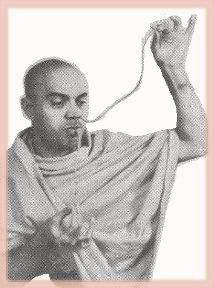
|
Take a thin thread
12 fingers long (1/2 cubit) without knots. Insert it into the nostrils and
passing it inside draw it out by the mouth. You can also pass the thread
through one nostril and pull it through the other. The thread is glued and
thereby rendered stiff for passing through easily. This Kriya purifies the
skull and produces clear and keen sight. Rhinitis and Coryza are cured thereby.
|
|
|
|
|
Trataka
(Gazing)
|
|
|
|
| Gaze
steadily without winking with a concentrated mind at any small object, until
tears begin to flow. By this practice all diseases of the eye are removed.
Unsteadiness of the mind vanishes. Sambhavi Siddhi is obtained. Will-power is
developed. Clairvoyance is induced.
|
|
|
|
Nauli
|
|
|
|
| This
is abdominal churning with the help of rectus muscle of the abdomen. Bend the
head down. Isolate the rectus muscle and turn it from right to left and from
left to right. This removes constipation, increases the digestive fire and
destroys all intestinal disorders.
|
|
|
|
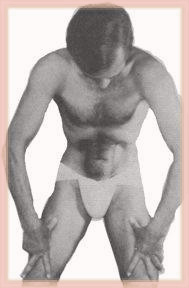
|
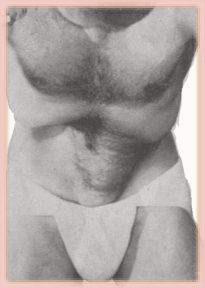
|
Central |
Left |
|
|
|
|
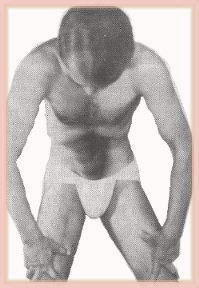
|
| Right |
|
|
|
|
Top
|
|
|
|
|
|
|
|
|
|
|
|
|
|
|
|
|
|
|
|
|
|
|
|
|
|
|
|
|
|
|
|
|
|
|
Site
Developed, Hosted & Maintained By:
Vijai Kumar Lunia
email : aryabhattastro@gmail.com
|






